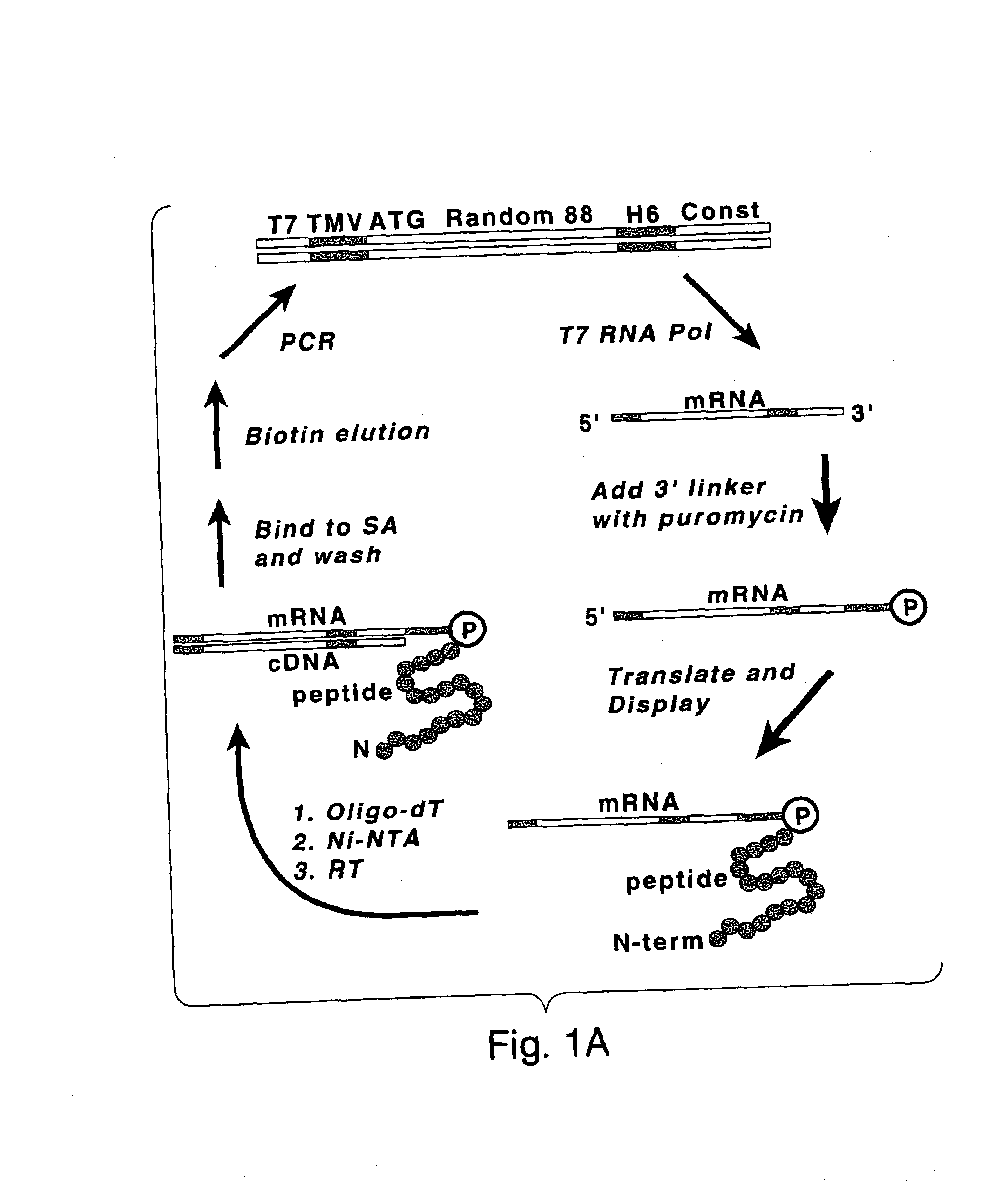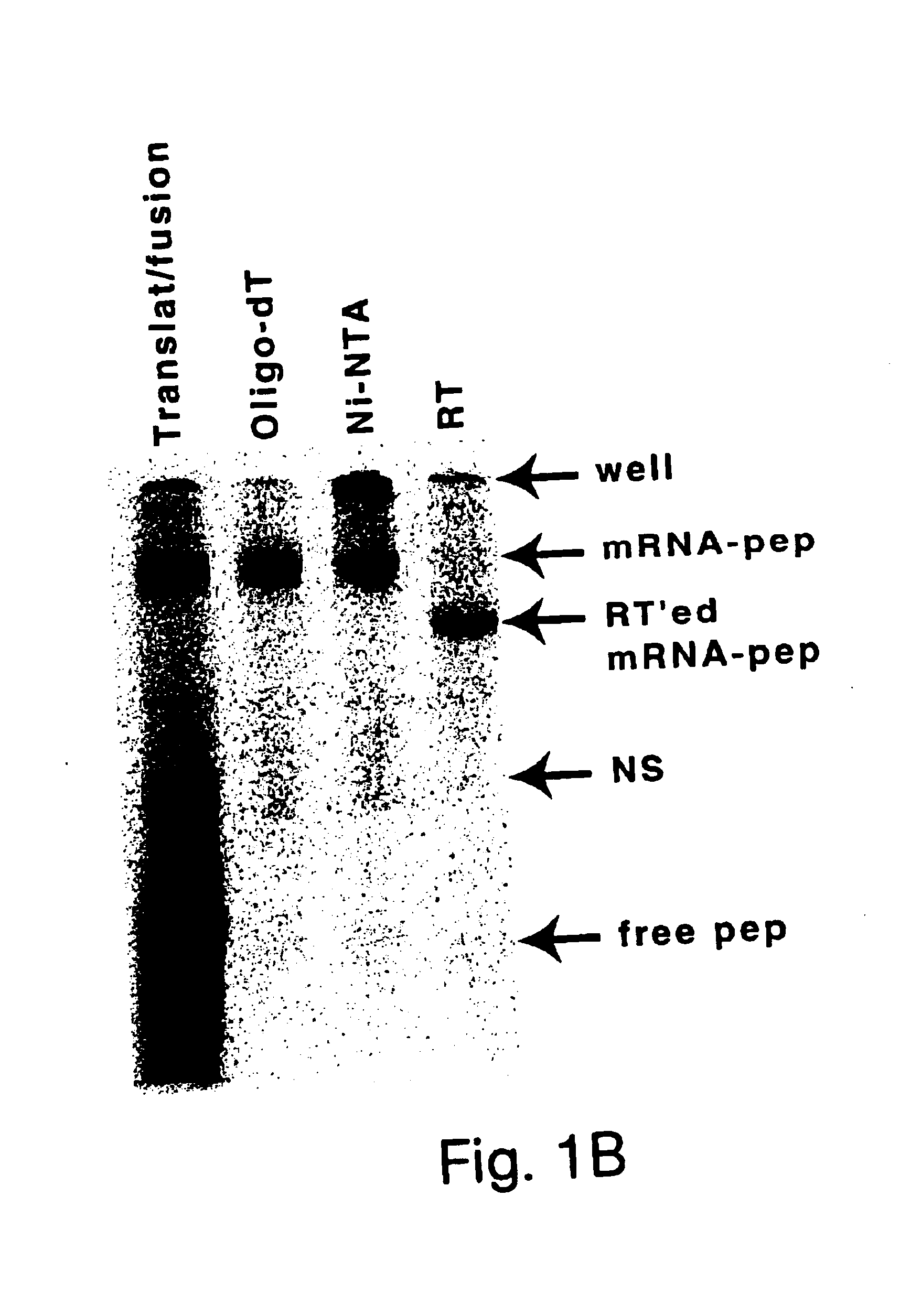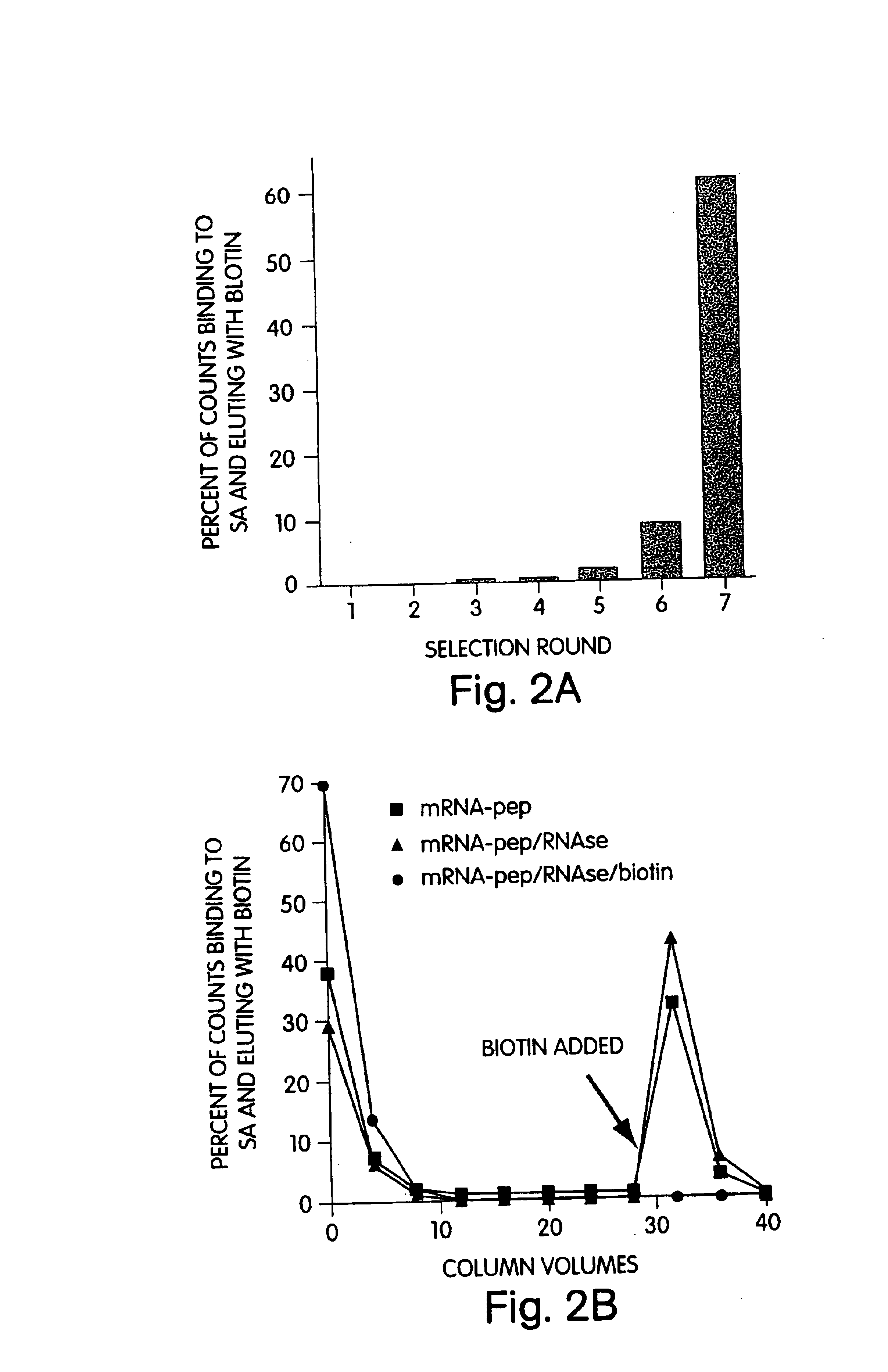Streptavidin-binding peptides and uses thereof
- Summary
- Abstract
- Description
- Claims
- Application Information
AI Technical Summary
Benefits of technology
Problems solved by technology
Method used
Image
Examples
Embodiment Construction
[0051]The present methods stem from the discovery of peptides that have unusually high affinities for streptavidin (KD of less than 10 μM). These peptides were selected from a library of randomized, non-constrained peptides using the mRNA display method. The high affinity of the selected peptides was particularly surprising, given the fact that non-constrained linear peptide libraries generally do not yield high affinity ligands to proteins, except in cases where the protein normally functions in peptide recognition (Clackton et al., Trends Biotech 12:173-184 (1994); Katz, Annu. Rev. Biophys. Biomol. Struct. 26:27-45, 1997). Many other peptides with high affinity for streptavidin may be isolated using the mRNA display method or any other selection method, such as ribosome display (Roberts, Curr. Opin. Chem. Biol. 3(3):268-73, 1999), or phage display (U.S. Pat. No. 5,821,047).
[0052]The binding characteristics of exemplary selected streptavidin-binding peptides are described in Table ...
PUM
| Property | Measurement | Unit |
|---|---|---|
| Fraction | aaaaa | aaaaa |
| Fraction | aaaaa | aaaaa |
| Fraction | aaaaa | aaaaa |
Abstract
Description
Claims
Application Information
 Login to View More
Login to View More - Generate Ideas
- Intellectual Property
- Life Sciences
- Materials
- Tech Scout
- Unparalleled Data Quality
- Higher Quality Content
- 60% Fewer Hallucinations
Browse by: Latest US Patents, China's latest patents, Technical Efficacy Thesaurus, Application Domain, Technology Topic, Popular Technical Reports.
© 2025 PatSnap. All rights reserved.Legal|Privacy policy|Modern Slavery Act Transparency Statement|Sitemap|About US| Contact US: help@patsnap.com



